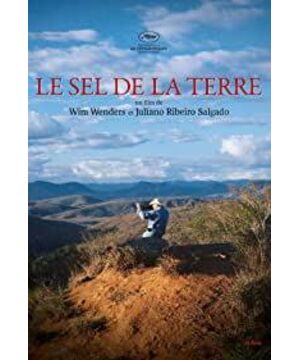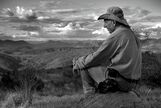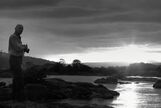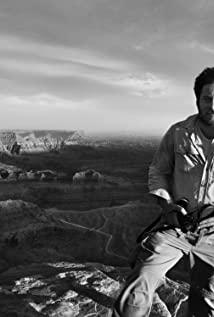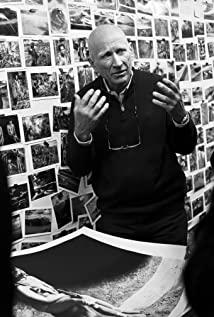Salt is one of those things that is bland if a dish is not salted, but just as bad if not used properly, Unable to swallow. If there are no human beings on this earth, there will be no long human history, no technology, no music, no painting, but in the same way, human beings have also brought war, killing, genocide to this world... Yes, human beings as The salt of the earth exists in the world.
The three major parts of the film are the actual shooting of the documentary, following the photographer Sebastião Salgado's natural photography in the wild, the documentary photography that made Salgado famous during the day, and some documentaries about his family's life in Brazil, France and other places since his father's generation. . The narrators of the film are also three people, Juliano Salgado, Sebastião Salgado and the director himself, Juliano's perspective, telling about his own father, Sebastião's perspective, narrating the origin of himself and photography, in northern Brazil, in Ethiopia, in Rwanda The story of each photo, and the turning point in his life, and director Wenders, starting with a photo of a Brazilian mine, explains his own view of the photo, of the photographer who became the subject. The documentary time is sequential, the presentation method and narrative angle are interleaved, and a compromise position has been found between skill and visibility.
The beginning of the film is extremely shocking. In an open-pit gold mine in Brazil, people are like Ants are generally looking for gold, and every corner of the photo is extremely clear, showing the texture of a print. Those miners come from different backgrounds, and there are also intellectuals who come here to pan for gold for the same purpose. In this photo and the next set of photos, you can see how the pyramids were built 5,000 years ago, and how the Epang Palace was built 2,000 years ago. People used to be slaves to power. After the system died out, people become a slave to one's own desires. The immortal emperor is not the savior of the world, and people are still unable to become their own masters because of their insatiable desires.
Following the rhythm of the film, the photographs of Brazil, Ethiopia, Sudan, Rwanda, Congo, Salgado are literally a chronicle of human misfortune. Every now and then, his face would flash out of the frame, his pictures, like a face reflected in glass, with melancholy and pity, pictures of the world he saw in the viewfinder, we were looking at those pictures. At times, they are also looking at us. It's not bad from a visual standpoint, but it brings an eerie sense of absurdity. Maybe because none of us want to be watched.
The lighting of Sebastião in the film is very consistent with his photographic style: massive details, rich grayscale, and from a close-up perspective from the front, you can see that there are two symmetrical lights in his eyes, almost indistinguishable from primary and secondary, with varying brightness. The entire face is lit with no highlights or loss of contours, while the body is completely hidden in the dark without adding any unwanted detail to the shot.
In a soft voice, each photo is a story. The photo is still, but the sound is flowing. The movie exists in the sound of the picture, in the time of stillness and movement.
There is a photo of a group of people sitting under a tree. The sun penetrates the leaves and creates a strong Tyndall effect. It is very similar to Moses leading the tribe out of Egypt, but there is no promised land waiting for them. In the chronicle of human misfortune, in the process of peeping into human nature, misery is so powerful, and love is like a candlelight in a cold night, a vague hope, but it is not enough to illuminate the night.
Only life itself can heal a soul wounded by death. A sad Sebastião Salgado returned to his hometown where he had changed his appearance, planting trees on the deserted hills, and did not expect to find another way. At the same time, he also turned to landscape photography and animal photography amid huge doubts. It turns out that on the seemingly riddled earth, there are still so many places that maintain its appearance at the time of Genesis. It turns out that every tree can breed so many new lives. It turned out that after passing through the mist of death, there is still new life and hope.
You can still imagine the scene of the gates of hell in the Divine Comedy from the walrus, and you can also see the feet of the iguanas as the hands of medieval warriors. Humans once used their own hands to create history and committed extreme violence with their own hands. The so-called turning over the hand is the cloud, why can't our hand make up for the fault and turn our head to protect the nature? However, people are born from the darkness, and eventually return to the darkness. In a short moment, we call it life.
The Salt of the Earth, this is an epic that begins in Exodus and ends in Genesis.
View more about The Salt of the Earth reviews


